Have you been thinking about switching to clean beauty? If you’re anything like I was at the beginning of this journey, making the switch to clean beauty might feel overwhelming.
There’s a lot of information floating around out there and it can be tough to separate fact from fiction. Plus, it’s hard to know which brands are actually toxin-free and which just have good marketing. To add to the headache, a lot of clean beauty brands just don’t work as well as conventional brands. Ugh.
But after struggling with adult acne and having multiple miscarriages, I began to pay more attention to what I use daily when it comes to beauty and personal care products. And when I learned the truth about the beauty industry, I knew I had to make some changes no matter what it took.
Over the last few years, I’ve made the switch to clean beauty and personal care products and I am SO glad I did. I feel better knowing the products I’m using aren’t harmful to me or my family!
There’s a peace of mind that comes with knowing that what you’re putting on your body every day is safe and won’t mess with hormones, increase your risk of cancer, or cause allergic reactions or irritation.
So whether you’ve experienced skin issues, hormone imbalance, or reproductive health challenges or just want to be more proactive about your health, I’m going to walk you through how to switch to clean beauty (without the overwhelm). In this post, we’re going to cover:
Ingredients That Clean Beauty Products Shouldn’t Have
There’s a loooong list of red-flag ingredients to watch out for in your beauty and personal care products but I want to cover some of the biggest offenders here.
I have a free label reading cheatsheet with more information about 20 red flag ingredients to watch out for on your beauty and personal care product labels. You can grab that here.
For now, here are a few to be aware of and check your labels for!
Fragrance
The International Fragrance Association lists 3,059 materials that are reported as being used in fragrance compounds, and some have evidence linking them to health effects like reproductive toxicity, cancer, and allergies. “Fragrance” is a blanket term that can mean a lot of things and can be made of just about anything. On the label, look for fragrance, perfume, parfum, essential oil blend, natural fragrance, and aroma. Even “natural fragrance” isn’t necessarily safe. Unless the label spells out which ingredients make up the fragrance, or the company discloses it, it’s better to avoid it.
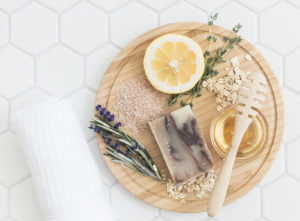
Parabens
Paraben preservatives are associated with disruption of the endocrine (hormone) system. Parabens have various different names. Check labels for and try to avoid the following: 1) Ethylparaben, 2) Butylparaben, 3) Benzylparaben, 4) Isobutylparaben, 5) Methylparaben, 6) Isopropylparaben, 7) Propylparaben.
Ethoxylated Ingredients
They are a group of ingredients made by the process of ethoxylation in which carcinogenic ethylene oxide is reacted with other ingredients. As a result of the chemical reaction, carcinogenic 1,4-dioxane is formed. Watch out for: PEG-X (number). Polysorbate-X (number), words ending in -eth with a number (or without) such as Laureth-7 or Sodium Laureth Sulfate.
Curious about what other red-flag ingredients to watch out for in your beauty and personal care products? Grab my FREE label reading cheat sheet here!

Where to Start: How to Make the Switch to Clean Beauty
I recommend two simple guidelines when you’re trying to decide which products to swap first, and what to swap to: 1) prioritize swapping out the products you use most frequently–especially those you use daily 2) prioritize products that sit on your skin (like deodorant, makeup, etc.)
Here’s a simple process to follow to get started!
1. Make a list of all the beauty and personal care products you use
When you make your list, list out every beauty product you use. I’m talking everything from makeup and skincare to hair care products and body care products (lotion, shaving cream, etc).
2. Circle the products you use most often
After making your big list, comb through it and circle the products you use every single day (or almost every single day). These will be the products you want to focus on switching first.
3. Start with one of those daily-use products
Instead of trying to switch everything at once, start by just picking one of the daily-use products you circled in the step prior. I personally suggest starting with switching your deodorant since it’s near one of your biggest sweat glands and close to breast tissue. Click here to see my favorite clean deodorant. Use the code JORDAN at checkout to get 10% off!
4. Purchase a few clean alternatives of that product to try
Depending on your budget, I suggest trying between 1-3 clean alternatives of whatever product you are looking to switch. It’s totally fine to try one at a time and of course, if you happen to like the first one you try then stick with it! If you don’t try another. If you need recommendations for clean beauty brands to switch to, I put all my best suggestions in my Lifestyle Overhaul guide. You can grab it here.
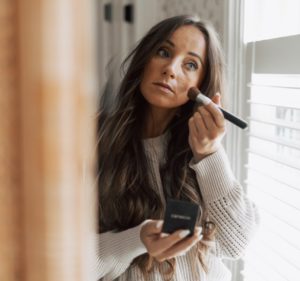
5. Decide on one and move on to another item on the list of daily-use products
After you try one or a few cleaner alternatives for whatever product you switch first, select the one you like best. Cross this item off the list after you replace it.
6. Repeat the process for the remaining products on your list
After swapping the first product you chose, move on to another product on your daily-use list and repeat this process until you replace all of the products you use most often for clean options. Once you swap all of your daily use products that you circled in step 2, move on to the rest of the items on the list (the products you use regularly but perhaps not as often as the circled ones).
The Best Clean Beauty Brands
One of the hardest things about switching to clean beauty, especially as a beginner with little ingredient knowledge, is figuring out which “clean beauty” brands are actually clean (vs which just have good marketing!).
On top of that, a lot of clean brands may have great ingredients but unfortunately severely lack in performance. I don’t know about you but I’m not very likely to stick with the clean stuff for very long if it’s not doing the job well! I don’t want greasy hair or makeup that melts off after a few hours!
So to take the guesswork out of it for you, I’ve compiled a list of 3 of my favorite toxin-free brands I love, that are truly clean, and that actually perform!
Haircare – Carina Organics
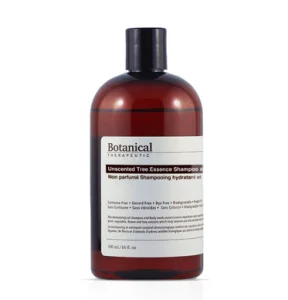
I love this brand for hair care, namely shampoo and conditioner. There are plenty of clean hair products out there but I found that a lot of them left my hair feeling greasy after, or didn’t lather well.
I’m a big fan of finding clean products that perform like normal products, and so far, Carina Organics Botanical Therapeutic shampoo and conditioner is the closest I’ve found to my old toxic faves!
You can grab their shampoo here, conditioner here, and leave-in conditioner here.
Body Care – Primally Pure
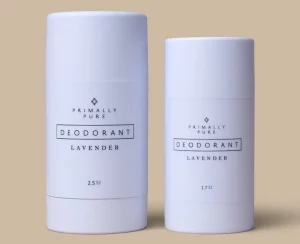
One of my favorite clean beauty brands for body products is Primally Pure. Their deodorant is one of the only toxin-free deodorants that actually work for me, and I love their body butters and hand soaps, too!
My favorite deodorant is the Vanilla + Citrus scent (truly smells heavenly without any toxins) and my go-to body butter scent is Almond + Vanilla. They also have bath salts, dry brushes, and body oils. You can get 10% off any of these items with my code, JORDAN, at checkout.
Skincare – Crunchi
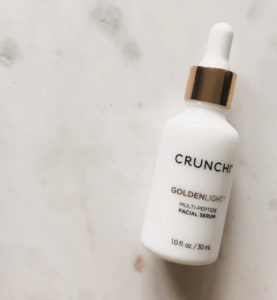
As someone who has sensitive skin and who has struggled with cystic, hormonal acne throughout most of my 20’s, I’ve tried a lot of skincare brands and have become very picky about what I’ll put on my face.
I have landed on Crunchi makeup and skincare as my absolute favorite – you can see my full review here. Their products are made with gentle, toxin-free ingredients that yield great results. Their makeup performs like my old toxic faves and I’ve never had clearer skin than I have since switching to Crunchi skincare.
While I don’t believe skincare alone is enough for clear skin, I have done so much work to heal my hormones and gut health… yet my skin was still randomly breaking out with the skincare I had been using. I noticed the biggest difference after switching to Crunchi skincare in tandem with the nutrition and lifestyle changes I had been making to support my body both externally and internally. Here’s a peek at my before and afters (as well as a few other before and afters!).
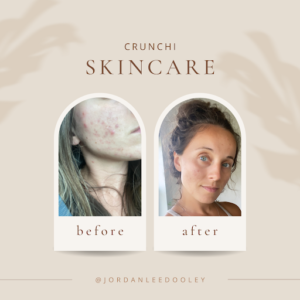
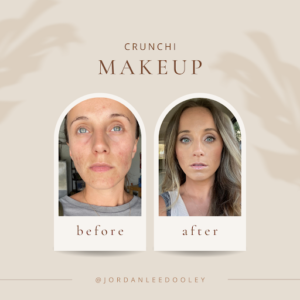
Every night before bed, I use the following:
You can get $10 off your first Crunchi order of $50+ by shopping through my link.
How to Know if a Beauty Product Is Clean
1. Check it on an app like EWG
There are plenty of apps such as EWG, ThinkDirty, Yuka, and more to help you quickly find out if a product you are considering using is clean. Out of all the options, I recommend EWG. Yuka isn’t bad but it has a smaller database and ThinkDirty was bought out by Proctor and Gamble in 2017 which makes it less reliable than alternative options.
That said, while EWG can be a helpful starting point, I don’t recommend relying on it alone because it often has limited information. EWG Skin Deep database recently updated its automated rating generator and is no longer taking into consideration the specific percentages of an ingredient used in a formula (unless a brand has invested in the EWG verification process).
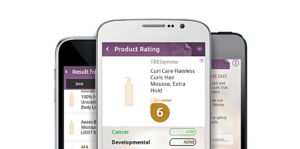
For example, sodium hydroxide, a formula pH adjuster, is perfectly safe at a low percentage such as 0.2%. However, at large percentages, it can potentially cause skin irritation.
Crunchi foundation ingredient rating used to be a “2”, as it was adjusted for the amount used, however, it is now automatically a “4”, as it no longer adjusts for this detail. While a 4 is still within the range of what I’d categorize as okay, this product should really be rated a 2.
Unfortunately, there is no perfect rating system that accurately reflects the safety of a product. There are benefits/accuracies as well as flaws with each system that exists, which is why I never recommend completely relying on one resource alone.
2. Check the label for Red Flag Ingredients
In addition to using something like the EWG Skin Deep Database, I also recommend learning the major red flag ingredients to watch for – and how they may be listed on a label – so you can spot them.
Some of these red-flag ingredients include things like fragrance/parfum, parabens, ethoxylated ingredients, PEGs, and ethanolamine compounds.
For a more complete list of red flag ingredients with a list of all the ways each one may be listed on a label, be sure to grab my free label reading cheat sheet!

3. Check to See if Ingredient Experts Recommend It
Another helpful way to find truly clean products and reliable brands is by checking with experts who research products for a living. Two of my favorite resources for this are ireadlabelsforyou.com and justingredients.us.
Irina, the woman behind ireadlabelsforyou.com, has a helpful post on her unique approach to product research (which goes beyond the info and research EWG references). You can see this post here.
This comprehensive approach is why I trust her recommendations so much!
While learning how to read labels and spot the major red flags, you don’t have to be an ingredient expert – just keep up with those who are and follow their recommendations!
Budgeting for the Switch to Clean Beauty
Perhaps one of the biggest obstacles to clean beauty is the price tag. Many feel that clean beauty may not be worth it because it is expensive, or at least more expensive than the options we can find at the local drugstore.
Is Clean Beauty Expensive?
Many feel that clean beauty is expensive, at least compared to conventional options.
While this may be true, I was personally challenged when I read a Vogue article that not only broke down why clean beauty products are generally more expensive than their conventional counterparts but also pointed out a mindset shift that is helpful to consider.
The owner of a cleaner beauty brand (not one I can vouch for as I have not researched it personally but the brand is not relevant to the point) was interviewed and posed the question, “Is it that clean beauty is expensive or that we’ve just gotten so used to buying junk that we think it’s expensive?”
Translation: Perhaps cleaner products are actually the standard we should be expecting as consumers, and instead of seeing that as “expensive” we should view the conventional stuff as “cheap junk” that is costly for our health (because it is).
Additionally, it’s important to remember that investing in healthier options isn’t a sunk cost. It’s not like buying a pair of shoes that you’ll wear once and then will collect dust in your closet. It’s an investment into your body and overall well-being, both present and future.

Yes, it may cost a bit more to invest in cleaner products but you really do pay either way – whether that’s by having to pay a little more on products in the short term, or deal with the potential health effects of the junk down the road.
That said, you may not be able to switch everything overnight but I’d be willing to bet that you can make some changes, and with a little creativity, you can really make some impactful investments.
Here are a few tips for how to start making the switch to clean beauty on a budget.
1. Prioritize the Products You Put On Your Skin Daily
Your skin is your largest organ, and it quickly absorbs anything you put on it. For this reason, I generally recommend prioritizing swapping the products you put on your skin – especially the products you’re using daily – for cleaner options.
You may not wear makeup or dry shampoo every day but you likely use deodorant and wash your face daily. If that’s the case, prioritize swapping your deodorant and skincare products first.
Simply prioritizing your swaps can reduce some of the financial stress that comes with trying to make the switch to clean beauty.

2. Look for Discounts
Another way to save some money when you switch is to take advantage of discounts and sales! Some clean beauty brands offer 10% off your first order just for entering your email address – take advantage of that! You can always unsubscribe later, and every little bit helps.
Additionally, some brands give influencers and/or customers discount codes to share or refer a friend. If friends of yours use and love a clean beauty brand, ask them if they have a referral link or know of any discounts.
I personally have discount links and codes I can share for some of my favorite clean beauty brands if you want to take advantage. You can use the link below and enter the code JORDAN at checkout to get 10% off Primally Pure products.
And you can use this link to get $10 off your first order of Crunchi makeup or skincare (must be $50+).
You also might be able to find discount codes on sites like RetailMeNot, Offers.com, or Slickdeals.
Lastly, if there’s a brand you really want to try or make the switch to but feel a little tight on cash, don’t be afraid to find their contact information, reach out to them via email, and ask if they have any upcoming sales.
You might be surprised to find out that they have a sale coming in a few days or weeks, and it could be beneficial to wait to make the switch until that sale happens!
3. Choose Budget-Friendly Clean Beauty Brands
If the price tag of some clean beauty brands makes you want to curl up in a fetal position, and that’s the one thing coming between you and clean beauty, there is good news. There are several more budget-friendly clean beauty brands to choose from, such as W3ll People.
The one downside to many of the budget-friendly clean beauty brands is that the performance may not be as good as you’d like, and if you don’t feel like your makeup lasts or hair care works well, you might be tempted to go back to the old toxic stuff because it works better.
This is why trying it’s worth making the investment into high-performing clean beauty products even if you have to do it slowly and have to prioritize the products you swap. It would be better for you to swap 5 items you use daily for safer alternatives that you love and will stick with (even if they’re more expensive) than go with the cheapest options to overhaul everything only to not use it all for very long because it doesn’t work well.
If you need more guidance on fitting clean beauty into your budget, my Lifestyle Overhaul guide walks you through a step-by-step process to create a wellness fund. This will help you take the financial stress out of switching to clean beauty because you’ll be following a plan that fits your needs.
The Lifestyle Overhaul guide also offers a long list of reliable swaps for every product you could think of, from makeup to dry shampoo to men’s products, and even includes budget-friendly options as well as where to find them! You can download the LO guide here.
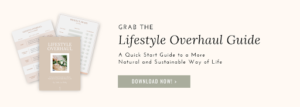
And there you have it! The ultimate guide to make the switch to clean beauty. As a quick recap, we covered some of the ingredients to watch for in beauty products (you can see a full list with my free cheatsheet), a step-by-step plan to start making the switch, the best clean beauty products to try, and budgeting for the investment.
Listen, friend. Although making the switch to clean beauty may not be the most convenient thing in the world, it IS worth it. There is very little regulation over what can go in our beauty and personal care products in the United States, which means we can’t just trust something is safe because it’s sold on a shelf at the local drugstore.
If you want to make safer choices, you must be your own advocate and become a conscious consumer. Although switching to beauty and personal care products that are free of ingredients that may disrupt your hormones or pose serious health concerns (infertility, cancer, etc.) is truly an investment into your future. And the good news is that there are high-performing, toxin-free options out there available to us (like Crunchi, Primally Pure, etc.).
If you take nothing else away from this post, remember this: You shouldn’t have to sacrifice your health for beauty and you shouldn’t have to give up beauty for your health.
Did this help you? Think you’re ready to make the switch to clean beauty? Tell us the first item you’re going to swap in the comments!
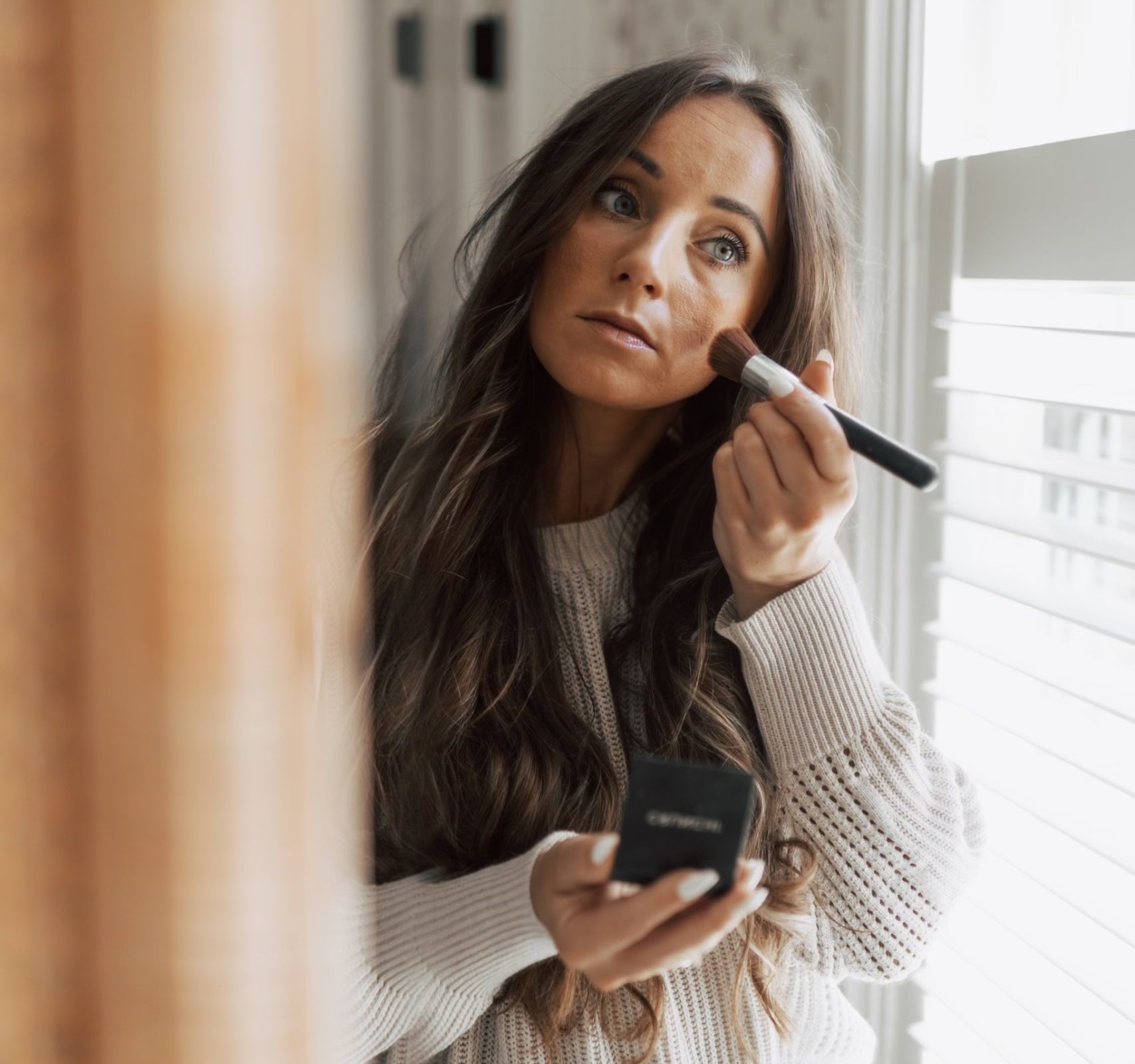

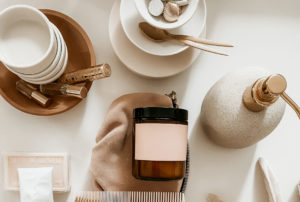
+ show Comments
- Hide Comments
add a comment